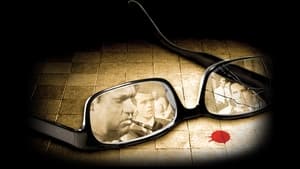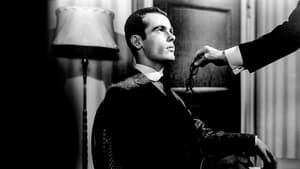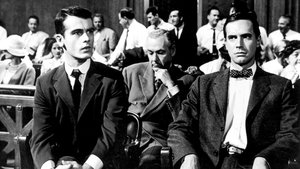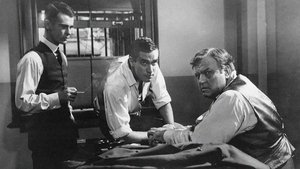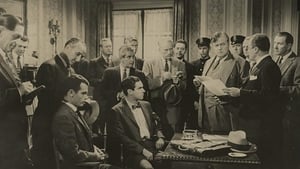Contact: [email protected]
Video Sources 0 Views

Synopsis
[ez-toc]




Introduction
In the ever-evolving landscape of cinema, there exists a delicate dance between preserving the past and embracing the future. One such dance has been impeccably performed with the colorized restoration of the 1959 classic, “Compulsion Colorized.” This transformative cinematic experience not only breathes new life into an old film but also pays homage to the artistry of yesteryears. In this article, we embark on a journey through time, exploring the history and significance of movie colorization, unraveling the narrative brilliance of “Compulsion Colorized,” and delving into the controversies and debates surrounding the restoration of old films.
Read Media File Transfer Agreement: Terms and Conditions
Read FAQ
The History and Evolution of Movie Colorization
The art of movie colorization is a fascinating journey that began in the early days of cinema. Originally, black and white films dominated the screens, capturing the essence of storytelling in a monochromatic palette. However, as technology advanced, so did the desire to infuse color into the world of cinema. Early colorization techniques were rudimentary, often involving hand-painting individual frames to add a splash of vibrancy.
Despite its artistic intentions, movie colorization faced vehement criticism. Purists argued that tampering with the original black and white compositions diluted the filmmakers’ intended vision. The controversy surrounding the practice created a rift within the film community, echoing the age-old debate between preservation and progress.
The Significance of Restoring and Colorizing Old Movies
Old movies, with their celluloid charm, have an ethereal quality that captivates audiences. However, the ravages of time threaten to erase these cinematic treasures. The importance of movie restoration cannot be overstated, as it safeguards the legacy of these films for future generations. Through meticulous restoration processes, old film prints are rescued from the brink of deterioration, ensuring that the magic of cinema remains intact.
Colorization adds another layer to this preservation effort. By breathing life into black and white classics, colorization enhances the viewing experience, making the narratives more accessible to contemporary audiences. The marriage of restoration and colorization becomes a bridge connecting the past with the present, fostering an appreciation for the timeless tales woven by filmmakers of bygone eras.
Understanding “Compulsion Colorized” (1959) and Its Historical Context
“Compulsion” (1959) stands as a testament to the delicate equilibrium between the real and the reel. Inspired by the infamous Leopold-Loeb case of the 1920s, the film navigates the murky waters of morality, privilege, and the consequences of unchecked intellect. This historical context provides a rich tapestry for the narrative, allowing audiences to delve into the complexities of the human psyche.
The Making of “Compulsion Colorized” and Its Key Players
Directed by the visionary Richard Fleischer, “Compulsion Colorized” boasts a stellar cast featuring the talents of Orson Welles, Dean Stockwell, and Diane Varsi. Fleischer’s directorial prowess, coupled with the compelling performances of the cast, elevates “Compulsion Colorized” beyond the constraints of its time. Orson Welles, a cinematic luminary in his own right, adds a layer of gravitas to the film, contributing to its enduring legacy.
Exploring the Plot and Themes of “Compulsion Colorized”
Set in 1924 Chicago, “Compulsion Colorized” unfolds the chilling tale of two wealthy and intellectually gifted young men who believe they are above the laws that govern society. Their descent into a twisted moral abyss forms the crux of the plot. The film not only delves into the psychological underpinnings of crime but also explores the privilege that enables such heinous acts.
Themes of morality, guilt, and the Nietzschean philosophy of the Ubermensch permeate the narrative, creating a thought-provoking cinematic experience. The dichotomy between good and evil, intelligence and moral bankruptcy, unfolds against the backdrop of a gripping murder trial, captivating audiences with its nuanced exploration of the human condition.
The Controversial Art of Colorizing Movies: A Debate
While the restoration and colorization of old films breathe new life into cinematic gems, the practice has not been without its share of controversy. Detractors argue that the addition of color disrupts the intended vision of filmmakers, altering the mood and atmosphere carefully crafted in black and white. The debate rages on, with staunch advocates for the preservation of the original format opposing the transformative touch of colorization.
Reception and Legacy of “Compulsion Colorized”
“Compulsion Colorized” garnered both acclaim and criticism upon its initial release. Critics praised the film’s gripping narrative, stellar performances, and exploration of profound themes. However, some viewed it as a controversial and unsettling portrayal of real-life events. The dichotomy in reviews underscores the film’s ability to provoke thought and elicit strong emotional responses.
The legacy of “Compulsion Colorized” extends beyond its initial reception. As the film resurfaces in the colorized format, contemporary audiences are given the opportunity to reassess and reinterpret its impact. The colorization serves as a lens through which the film is reframed, inviting viewers to appreciate its artistic brilliance with fresh eyes.
The Leopold-Loeb Case in Real Life and Reel Life
The Leopold-Loeb case, a chilling chapter in American criminal history, served as the inspiration for “Compulsion.” The filmmakers drew parallels between the real-life events and the Nietzschean philosophy embraced by the perpetrators. The trial, with its twists and turns, mirrors the complexities depicted in the film, blurring the lines between reality and fiction.
Nietzsche’s philosophy, particularly the concept of the Ubermensch, becomes a thematic cornerstone in “Compulsion.” The film challenges audiences to grapple with the idea that exceptional intellect does not immunize individuals from moral bankruptcy. This interplay between the historical and philosophical elements adds depth and resonance to the narrative.
Restoring the Brilliance of “Compulsion” (1959)
The restoration of “Compulsion” is a meticulous process that honors the film’s original aesthetic while breathing new life into its frames. The colorization, when executed with precision, enhances the visual experience without overshadowing the director’s intended vision. Through advancements in technology, the restoration team painstakingly revives each frame, ensuring that the brilliance of “Compulsion” transcends the boundaries of time.
Recognition must be given to the dedication of those involved in the restoration process. Preserving the essence of a classic film requires a delicate touch, and the restoration of “Compulsion” exemplifies a harmonious blend of artistry and technology. The result is a cinematic gem that sparkles with renewed vigor, inviting audiences to witness the brilliance of a bygone era in a contemporary light.
Conclusion
In the ever-evolving landscape of cinema, “Compulsion Colorized 1959” stands as a shining example of the delicate balance between preservation and innovation. The film’s colorized restoration breathes new life into a classic, inviting audiences to rediscover the brilliance of a bygone era. While the debate over movie colorization persists, “Compulsion” exemplifies the potential for artistry and technology to coalesce, creating a cinematic experience that transcends temporal boundaries.
As we navigate the intricate dance between the past and present, it becomes clear that “Compulsion” is not just a film; it is a testament to the enduring power of storytelling. In preserving its original form and embracing its colorized rendition, we honor the artistry of the filmmakers while acknowledging the transformative potential of restoration. “Compulsion Colorized 1959” is not merely a movie; it is a vibrant brushstroke on the canvas of cinematic history, inviting us to appreciate the timeless beauty of storytelling in all its colorful glory.

